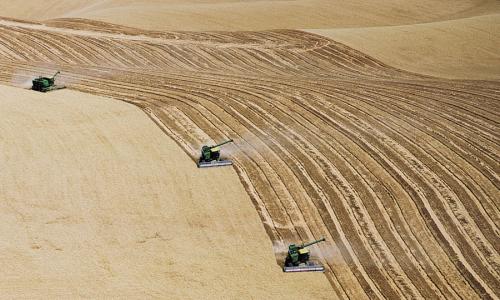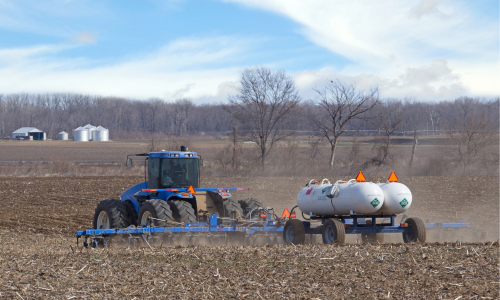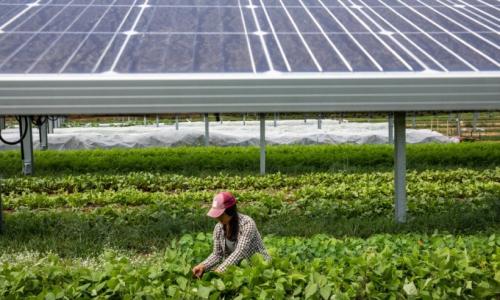Industrial agriculture is currently the dominant food production system in the United States. It's characterized by large-scale monoculture, heavy use of chemical fertilizers and pesticides, and meat production in CAFOs (confined animal feeding operations). The industrial approach to farming is also defined by its heavy emphasis on a few crops that overwhelmingly end up as animal feed, biofuels, and processed junk food ingredients.
From its mid-20th century beginnings, industrial agriculture has been sold to the public as a technological miracle. Its efficiency, we were told, would allow food production to keep pace with a rapidly growing global population, while its economies of scale would ensure that farming remained a profitable business.
But too often, something crucial was left out of this story: the price tag.
In fact, our industrialized food and agriculture system comes with steep costs, many of which are picked up by taxpayers, rural communities, farmers themselves, other business sectors, and future generations. When we include these “externalities” in our reckoning, we can see that this system is not a cost-effective, healthful, or sustainable way to produce the food we need.
And the good news is that it’s not the only way. Scientists and farmers are developing smart, modern agricultural systems that could reduce or eliminate many of the costs of industrial agriculture—and still allow farmers to run a profitable business. It’s time for farm policy to move into the 21st century and prioritize these innovative methods.
Costs to human health and safety
Industrial farming is bad for the health of workers, eaters, and downstream neighbors. Here are some of its costly health impacts:
- Pesticide toxicity. Herbicides and insecticides commonly used in agriculture have been associated with both acute poisoning and long-term chronic illness.
- Water pollution from fertilizer runoff contaminates downstream drinking water supplies, requiring costly cleanup measures with an annual price tag of nearly $2 billion.
- Junk food. Industrial agriculture, especially in the central United States, mostly produces commodity crops like corn and soybeans. These crops are used to make the processed foods that dominate the US diet, with serious—and enormously costly—health impacts.
- Antibiotic resistance. The overuse of antibiotics in CAFOs has accelerated the development of antibiotic-resistant bacteria, which has taken a toll both in lives and health care dollars.
Damage to farmland and the rural environment
The soils of the American Corn Belt were once celebrated for their fertility. But industrial farming treats that fertility as a resource to be tapped, not maintained. This leads to several kinds of costs, including:
- Depletion. Monoculture exhausts soil fertility, requiring costly applications of chemical fertilizers.
- Irrigation. Soils used to grow annual row crops and then left bare for much of the year have poor drought resistance, increasing irrigation costs.
- Erosion. Monoculture degrades soil structure and leaves it more vulnerable to erosion, resulting in costs for soil replacement, cleanup, and lost farmland value.
- Lost biodiversity. Industrial farms don't support the rich range of life that more diverse farms do. As a result, the land suffers from a shortage of the ecosystem services, such as pollination, that a more diverse landscape offers.
Social and economic impacts
The pressure to "get big or get out" is fundamental to industrial agriculture—and takes a toll on communities.
- Loss of mid-sized farms. Once the backbone of US agriculture, medium-sized farms are a dwindling breed, which means that fewer and fewer people make their living as farmers—a trend that has been bad for the economies of rural communities and farm states.
- Harm to neighboring and downstream economies. Industrial agriculture can pack an economic wallop hundreds of miles from its origin—just ask local governments and utility managers who must install expensive equipment to remove fertilizer by-products from public drinking water supplies. Or ask people who make their living from fisheries or tourism on the Gulf of Mexico and elsewhere, where "dead zones" and toxic algae blooms caused by farm runoff do damage with an annual price tag in the billions. CAFOs, too, create pollution problems that reduce livability and depress property values in surrounding communities.




